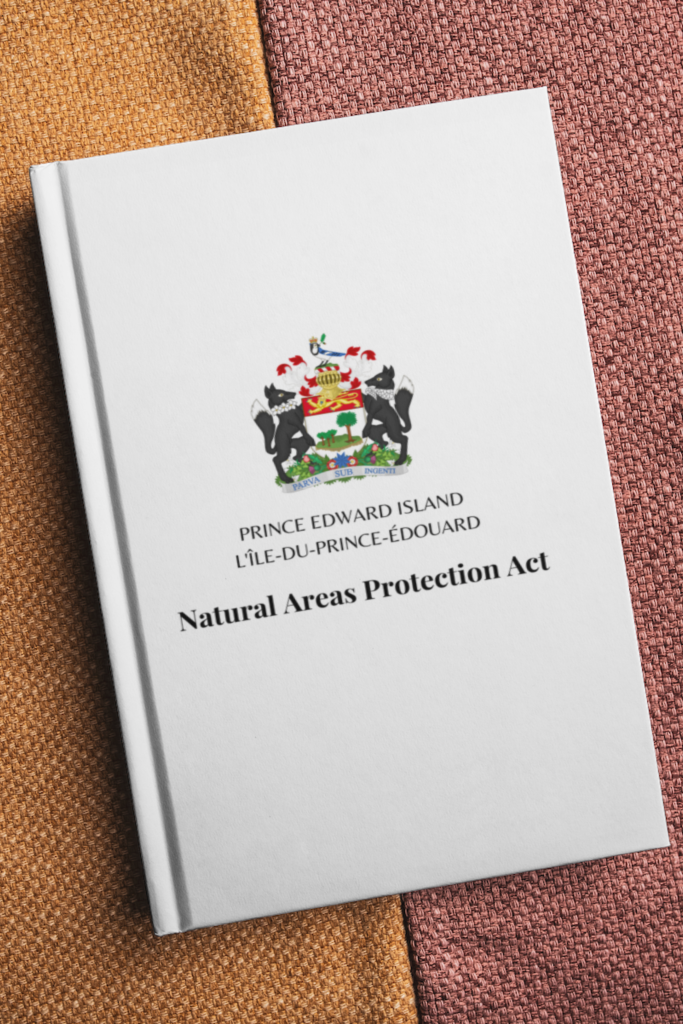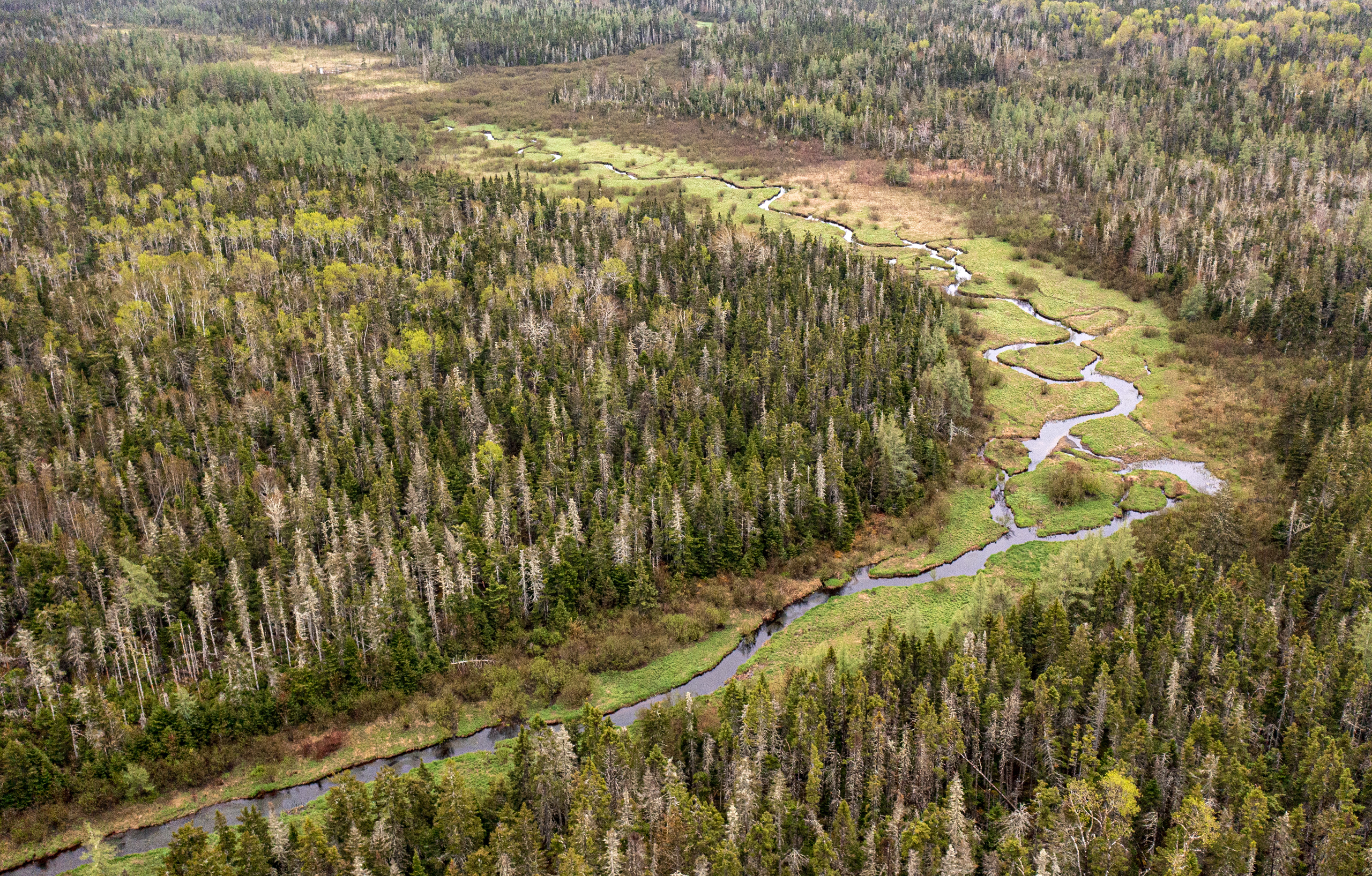
The PEI Natural Areas Protection Act (NAPA) stands as a significant legislative tool for safeguarding ecologically important land in Prince Edward Island (PEI). Island Nature Trust (INT) employs this act to protect and conserve the province’s invaluable natural areas. In a province where 87% of land is privately owned, INT acquires ecologically important land and uses NAPA to ensure the preservation of PEI’s diverse ecosystems for generations to come. However, INT is not the only organization that can utilize NAPA, other organizations, the Province of PEI, and individuals can also protect natural areas through NAPA.
NAPA defines natural areas as land containing natural ecosystems, habitats for rare or endangered flora and fauna, unique features, scenic beauty, or opportunities for scientific and educational programs in the natural environment.
NAPA empowers organizations like Island Nature Trust to protect and manage these areas, preventing their degradation or conversion for other purposes. When a parcel of land is designated, it becomes subject to restrictions, including activities like tree cutting, introducing non-native species, operating motor vehicles, constructing buildings or roads, and more.
The protection provided by NAPA is permanent and cannot be removed by the landowner or organizations like INT. The restrictive covenant remains in effect even if ownership changes, ensuring ongoing preservation. However, the Minister of Environment, Energy, and Climate Action has limited authority to revoke the designation under specific circumstances, although this is infrequent.
To ensure proper management and designation, the NAPA Technical Advisory Committee reviews all applications and provides guidance to the Minister. This committee plays a crucial role in the protection and preservation of PEI’s natural areas.
Benefits and Future Implications
The PEI Natural Areas Protection Act, coupled with the efforts of Island Nature Trust, offers numerous benefits to PEI’s environment and communities.
Biodiversity Conservation: By protecting and managing ecologically important land, NAPA designation helps preserve the rich biodiversity of PEI. These natural areas serve as habitats for numerous plant and animal species, some of which may be endangered or at risk. Conserving these ecosystems contributes to the overall health and resilience of the island’s natural heritage.
Education and Recreation: Protected natural areas not only offer opportunities for research and scientific studies but also serve as valuable educational resources for schools, universities, and the public. Some natural areas contain footpaths, which provide spaces for outdoor recreation, promoting physical and mental well-being, and fostering a connection with nature.
Climate Change Mitigation: Preserved natural areas act as carbon sinks, absorbing and storing atmospheric carbon dioxide, a crucial factor in mitigating climate change. Conserving these lands helps combat greenhouse gas emissions and promotes climate resilience
Frequently Asked Questions
What land can be protected through NAPA?
In order for land to be protected through the PEI Natural Areas Protection Act, it must meet the definition of a natural area. A natural area is defined as a parcel of land that:
- contains natural ecosystems or constitutes the habitat of rare, endangered or uncommon plant or animal species,
- contains unusual botanical, zoological, geological, morphological or palaeontological features,
- exhibits exceptional and diversified scenery,
- provides haven for seasonal concentrations of birds and animals, or
- provides opportunities for scientific and educational programs in aspects of the natural environment.
Who can protect their land through NAPA?
The Minister of Environment, Energy and Climate Action can approve NAPA designation of a natural area that is (a) Crown land, (b) the Minister has entered into an agreement with a private landowner to purchase, lease or acquire the land, or (c) a private landowner has elected to register a restrictive covenant on their land. So essentially, both the Province of PEI and private landowners (individuals or organizations) can apply to designate their land under NAPA.
Why protect land through NAPA?
The purpose of NAPA is to preserve natural areas in the province. A private landowner may wish to protect their land through NAPA to ensure the area remains as a natural area into the future, preventing any development or conversion to a different land use (e.g., forestry or farming).
Is NAPA a permanent protection mechanism?
Once a private landowner designates their land under NAPA they cannot remove the designation. The restrictive covenant is applicable to all future owners as well and is essentially permanent. While a landowner cannot remove the designation, the Minister of Environment, Energy and Climate Action does have the ability in certain circumstances to revoke designation to private and Crown land. This is uncommon and INT views the NAPA designation as a permanent protection mechanism.
If I own land and am interested in protecting natural features, do I have to protect the full property?
No. Landowners who have natural features on their property but also have structures (e.g., homes and/or buildings) can apply to designate only a portion of the property. Structures and roads would have to be excluded from the designated area. INT can assist interested private landowners through the designation process.
What activities does NAPA restrict?
NAPA restricts activities that have the potential to degrade a natural area. It also prevents conversion of a natural area to a different use – for example, conversion of a natural area to farmland or subdivision. Some common restrictions include:
- Cutting, destroying or removing trees, shrubs or vegetation (invasive species may be removed);
- Planting or introducing non-native plant or animal species;
- Operating motor vehicles on the property, including snowmobiles and all-terrain vehicles;
- Creating, constructing, or paving roads, driveways, docks, landing strips or parking lots;
- Erecting or constructing buildings, fences, or structures of any kind;
- Dumping, filling, excavating, mining, drilling, dredging or adding/removing surface or sub-surface material;
- Severance or subdivision; and
- Camping, campfires, or erection of artificial shelters.

Ways To Protect Your Land
Private Stewardship
You can retain ownership of the land and still place it under NAPA protection. Our resource guide “Protecting Natural Places in Prince Edward Island”’ provides more detail on this option.
Donate or Sell Your Land
For those who are able, the act of giving land to a land trust so that it may be protected is the ultimate in generosity. Island Nature Trust profoundly appreciates anyone who considers such a gift.
